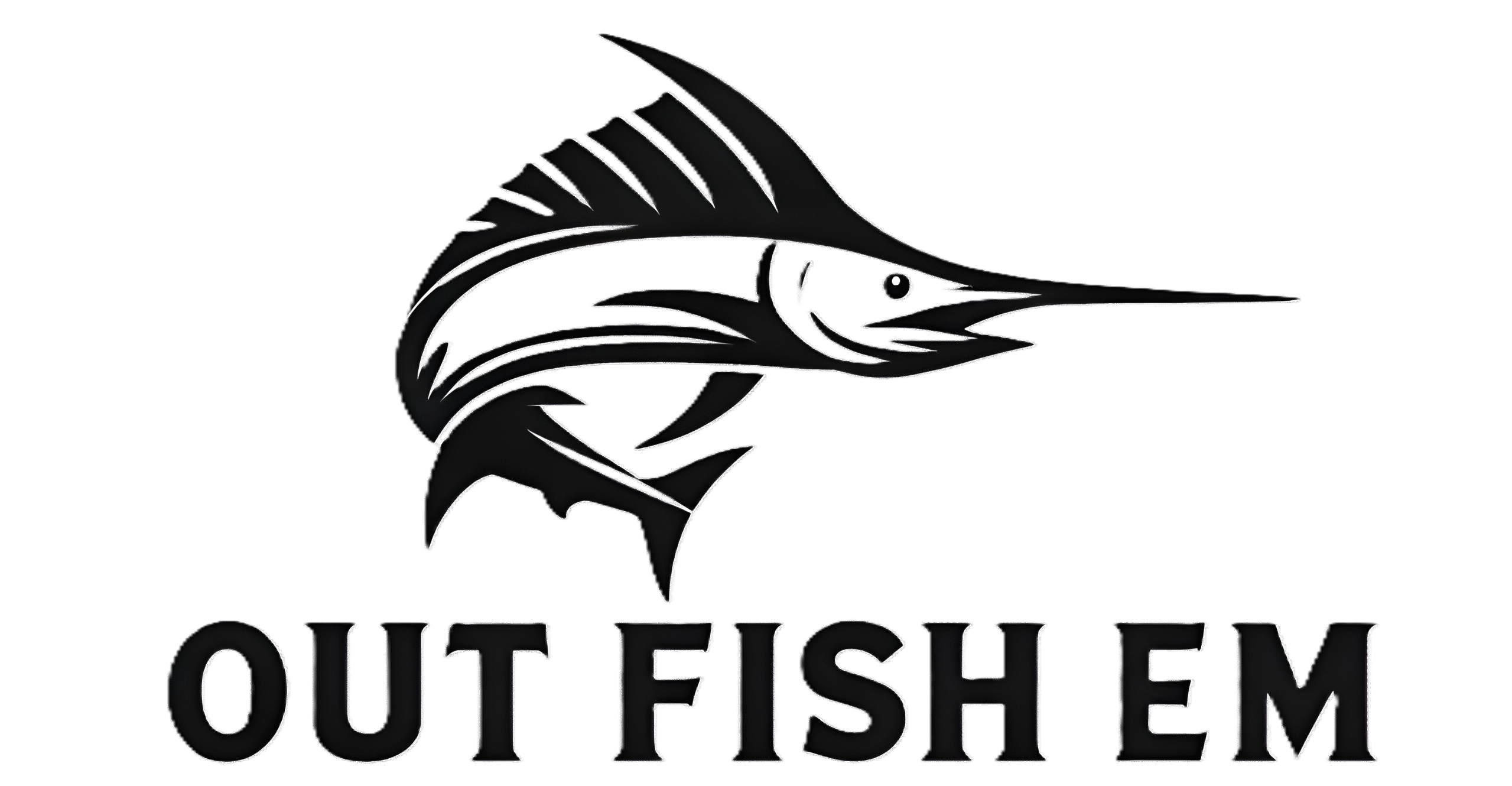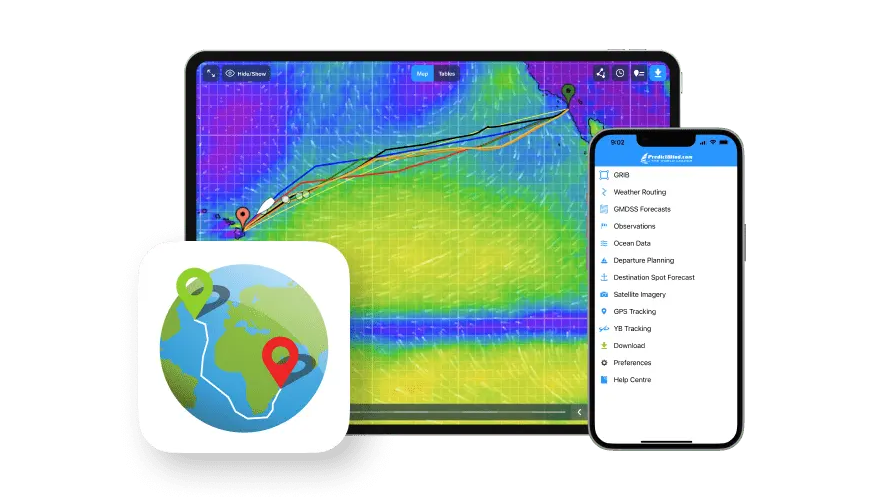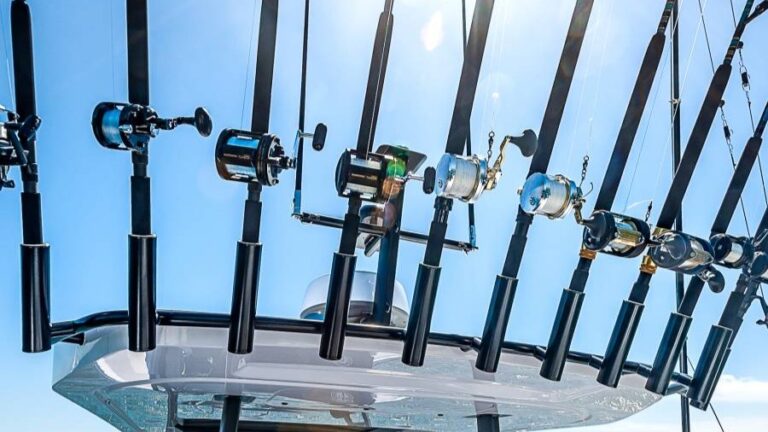How to Read Offshore Weather for Safe Gulf Fishing
How to Read Offshore Weather for Safe Gulf Fishing
Planning a successful offshore fishing trip starts long before you leave the dock. In the Gulf of Mexico, where wave periods are often short and seas can stack up quickly, understanding the marine forecast is the difference between a fun offshore run and a long, wet beating.
Gulf wave heights: what the numbers really feel like
Wave height is usually reported in feet. In the Gulf, even “small” waves can feel rough if the period is short. As a general rule of thumb for most 22–30 ft offshore boats:
- 0–1 ft – “Calm / Glassy”: Easy ride, great for long runs offshore.
- 1–2 ft – “Light chop”: Comfortable for almost any boat. Good fishing weather.
- 2–3 ft – “Moderate chop”: Common Gulf day. Very fishable but you’ll feel it.
- 3–4 ft – “Rough for small boats”: Fishable for experienced crews and bigger hulls, but expect a slower, wetter ride.
- 4–6 ft – “Borderline / Stay close”: This is serious for most recreational boats. Only very experienced captains in the right boat should consider it, and even then it’s usually not worth it.
- Over 6 ft – “No-go for most rec trips”: In the Gulf, if you’re seeing 6 ft+ forecast seas, that usually means strong winds or storms in the area. Most people should stay at the dock.
Those numbers are guidelines, not hard rules. Your boat, loadout, crew, and experience level matter. But if the forecast is calling for 5–6 ft or more, that’s usually your sign to cancel or fish inshore.
Why wave period matters so much in the Gulf
Wave period is the time in seconds between wave peaks. This is huge in the Gulf, where we often see short, wind-driven chop instead of big long-period ocean swell.
- 3–5 seconds: Very close together, steep, stacked waves. Even 2–3 ft at this period can beat you up.
- 6–8 seconds: More manageable, still “choppy Gulf” but much more comfortable.
- 9–11+ seconds: Long-period swell. Rare for our part of the Gulf, and usually a pretty nice ride even if the height is higher.
A 3 ft sea at 4 seconds can feel worse than a 5 ft sea at 10 seconds. When you check the forecast, always look at both the height and the period.
Reading wind speed and direction for the Gulf
Wind is what builds most of our Gulf chop. Stronger winds over a long fetch (open water) mean steeper waves.
- Under 10 knots: Generally calm to light chop.
- 10–15 knots: Typical “fishable” Gulf day. Expect 2–3 ft seas.
- 15–20 knots: Getting rough. You’ll see 3–4 ft+ and whitecaps. Many small boats will stay inshore.
- 20+ knots: Usually a no-go for most rec boats offshore, especially if you’re running a long distance.
Pay attention to direction too. A strong onshore or opposing wind against the current or tide can stack waves up at passes and along certain stretches, making them much worse than the open-water forecast suggests.
Use multiple forecast sources, not just one app
In the Gulf, the weather can change fast. Don’t rely on a single app or model. Cross-check a few:
- NOAA Marine Forecast: The standard zone forecast for your area.
- Windy / Ventusky: Great for visualizing wind, wave height and period hour by hour.
- Buoy or station data: Look at actual conditions at nearby buoys or oil platforms – wave height, period and wind.
- Radar: Check for storms, squall lines and outflow boundaries before you leave and while you’re out there.
If the models disagree, assume the less favorable one might be right. The Gulf rarely “over-delivers” on calm.
Make More Than One Offshore Plan
One thing I’ve learned the hard way in the Gulf is that you can’t get married to just one spot. I’ve done it plenty of times — locked onto a waypoint because we hammered fish there last trip. But when you’re deep dropping or bottom fishing, there are usually multiple productive areas spread out in different directions, and sticking to a single plan can turn a decent weather day into a beating.
Wave direction matters more than people realize. If your planned spot forces you to deadhead straight into the waves, you’re taking the shortest period and the full force of the chop. Even on a “2–3 ft” forecast, that can mean a slow, wet, back-breaking ride.
Don’t be afraid to call an audible. Sometimes the smartest move is pointing the boat 30 degrees off your original heading and riding the troughs instead. It smooths out the chop, saves fuel, saves time, and your crew will thank you for not beating them up before the fishing even starts.
The Gulf is big, and the fish aren’t only in one spot. Be flexible, watch the wave direction, and always have more than one plan before you leave the dock.
Red flags that should make you think twice
- Forecast seas building to 5–6 ft during your trip window.
- Short periods (3–5 seconds) with 3–4 ft or more predicted.
- Strong onshore winds (15–20+ knots) blowing into your route home.
- Thunderstorms or squall lines on radar along your path.
- Small Craft Advisory or Gale Warning in effect for your zone.
One of these might be manageable with the right boat and experience. When you start seeing several at once, that’s your sign to stay inside or reschedule.
Bottom line for Gulf trips
For most recreational offshore runs in the Gulf of Mexico:
- Best days: 1–2 ft at 6–8 seconds, winds under 15 knots.
- Borderline: 3–4 ft or anything short-period and windy – only if you and your crew know what you’re doing.
- Probably stay home: 5–6 ft+ forecast, short periods, or stiff 20+ knot winds.
The fish will still be there tomorrow. Make decisions based on your boat, your crew, and your comfort level – not just how bad you want to go.


